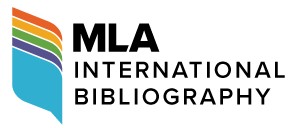Abstract
Han scholars, represented by Liu Xiang and his son Liu Xin, undertook a systematic collation, compilation and categorization of the growing number of texts. Seven Summaries (Qilüe) assigned each work from the early period to the late Western Han period to different intellectual lineages as understood by Liu Xiang and Liu Xin, creating textual lineages dominated by the Confucian classics. In turn, these textual linages established theoretical frameworks for later literary styles such as the idea that “the classics are the source of all writing”. Categorized Catalogs (Bielu) and Seven Summaries gave specific descriptions of the nature, various sources, meaning of titles and textual styles of all the materials and art forms that Liu Xiang and Liu Xin dealt with. The way in which Seven Summaries categorized and ordered the texts also revealed a potential concept of literary styles. In particular, the organization of the miscellaneous materials according to textual forms can be seen as an early pattern for arranging an anthology according to literary styles. In Records of Literature and Art in the Book of Han (Hanshu yiwenzhi), Ban Gu modified the catalog offered in Seven Summaries. This modification heralded the concept of “literary collection” in the Four Categories in ancient Chinese classification of classics, namely, scripture, history, masters and literary collection.
Keywords
Seven Summaries, Categorized Catalogs, Records of Literature and Art in the Book of Han, concept of literary styles
First Page
196
Last Page
206
Recommended Citation
Li, Guanlan. 2024. "What the Compilation and Cataloguing of Texts in the Han Period Meant for the Study of Literary Styles: An Observation Centering on Liu Xiang and Liu Xin." Theoretical Studies in Literature and Art 44, (3): pp.196-206. https://tsla.researchcommons.org/journal/vol44/iss3/19


